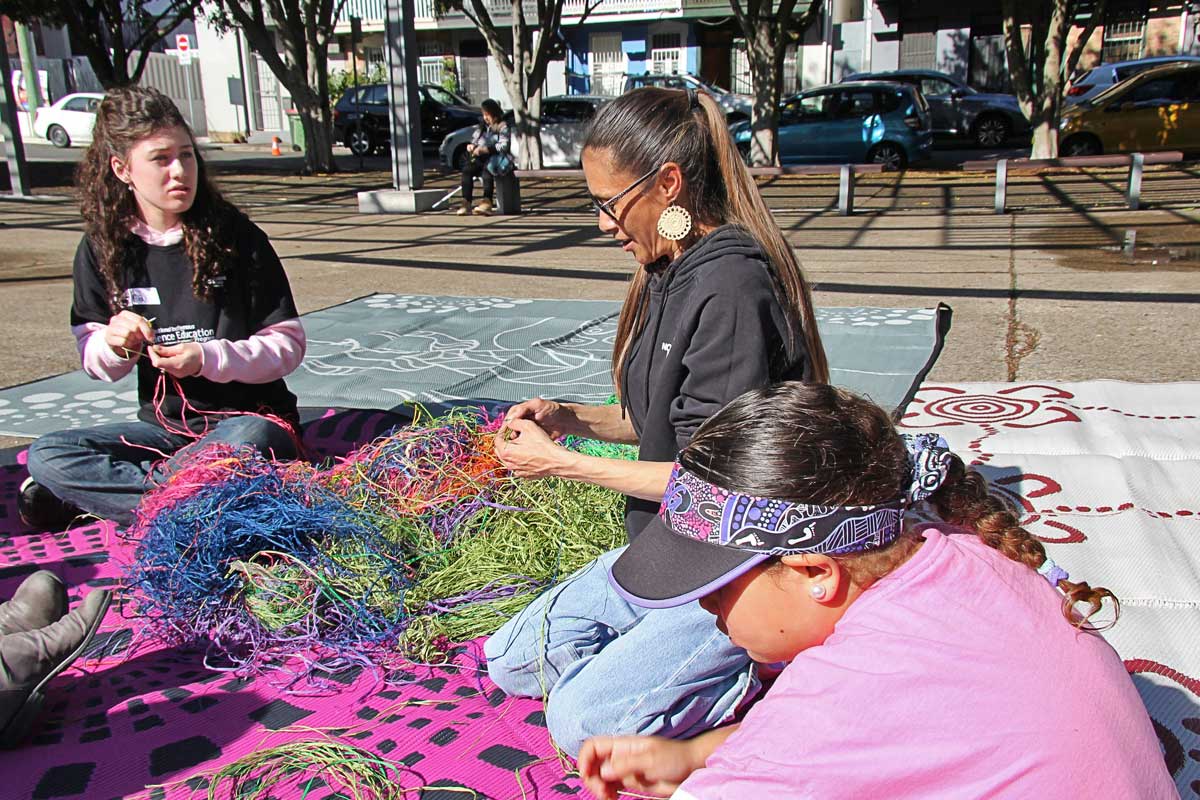Held at Redfern Community Centre on August 17, the 2024 Indigenous Science Experience Community Day gave visitors the chance to learn about everything from Indigenous astronomy and bush medicine to the physics behind traditional tools.
Through interactive stalls, presentations and workshops, the event offered a hands-on approach to learning and appreciating the rich scientific knowledge of Indigenous cultures – knowledge which has enabled them to thrive in the harsh Australian landscape for over 60,000 years.
Yaegl man, Shane McLeay and Yaegl woman, Aunty Glenda MacPhail travelled from North Coast NSW to share their knowledge of bush medicine at the community day.
“It’s important to keep tradition alive, because, for years, tradition’s been dying. We need fellas like myself and more people to bring it back to life … Be proud of what you know and what you can do to help other people,” McLeay said.
Their stall showcased a small selection of native plants used in traditional Yaegl healing practices, including paddy lucerne, which is made into a tonic to alleviate period pain; bush lemons, which are rich in vitamin C and help with the winter sniffles; and dock leaf stems, which are used to treat hornet and jellyfish stings, among others.
A talk on Indigenous astronomy explained how First Nations peoples used star maps and Songlines to navigate landscapes outside their local Country, and attendees were invited to learn about the science behind the design of Indigenous tools and weapons.
Jake Ferguson, a Bidjigal-Dharawal, Wailwan, Biripi and Bundjalung man, spoke about how traditional Indigenous craftsmanship is still used in modern-day engineering practices.
“The man on your $50 note, David Unaipon, had a design concept for a helicopter based on the gyroscopic motion of boomerangs. The principle of the old helicopter is the same process as throwing a boomerang. Like boomerangs, helicopter blades are not just flat, they’ve got the curvature to it,” he said.
“Our science can be adapted and used in modern-day technology.
“Indigenous science … needs to be promoted and highlighted more, because it’s something that’s a part of Australia, which everyone should be proud about. Hopefully, programs like this will help that for the future.”
Concluding National Science Week, the Indigenous Science Experience Community Day allowed people of all ages and backgrounds to engage with and celebrate scientific knowledge from the world’s oldest living cultures.






